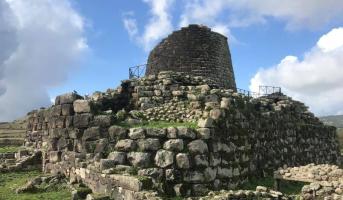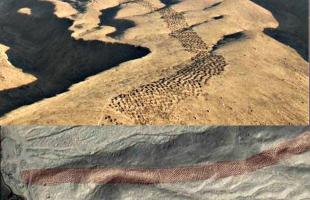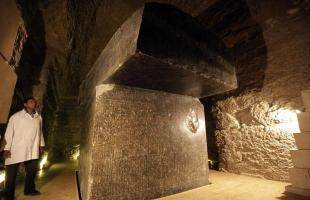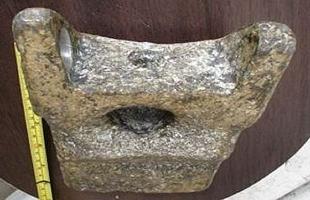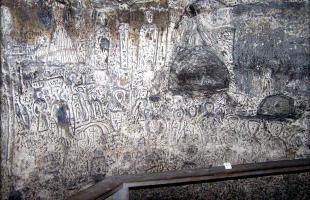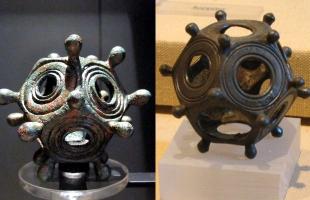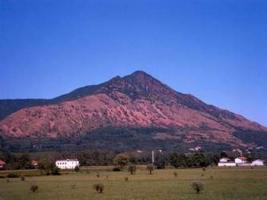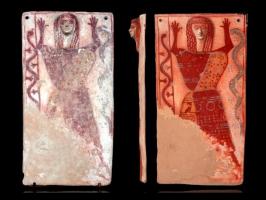The nuraghe enigma

The Nuraghes are the largest megalithic monuments in Europe, the very symbol of Sardinia. Present and living signs of a fascinating civilization, perhaps the most mysterious in the Mediterranean landscape. Their lofty silhouettes can be glimpsed among the meadows of the countryside, on the hillsides or close to the magnificent Sardinian coastline. The number of nuraghes is astounding: about 8,000, one every three square kilometers, all of them erected using the technique of dry interlocking, that is, superimposing rough blocks of granite, lava, basalt or limestone without mortar or cement. The stones formed a hollow inner chamber, covered by a dome, whose static nature still astounds today. These turriform structures, which Aristotle called "buildings of the ancients," date back more than three thousand years and were built in the time span from the Early Bronze Age to the very early Iron Age. The towers differ according to period and style: protonuraghi, archaic Cyclopean structures, characterized by their sloping roofs, appeared as early as around 1800 B.C.; tancate nuraghes, with an added courtyard; and polylobate nuraghes, in which a tholos tower, similar to the keep of medieval castles, is surrounded by secondary towers. Inside, structures include the andito, or entrance, "object" niches dedicated to sacred rituals, some chambers and stairways.
At the same time that Egyptian pyramids, Mayan temples, Assyrian to Babylonian centers and the Stonehenge site were being erected, unique stone fortresses were being built in Sardinia. As archaeoastronomy scholar Giulio Magli notes, nuraghes are "an icon of the sky" and an identifying sign of the Sardinian people: symbols of scientific knowledge and evolved techniques, as evidenced by the triangular or circular alignments and geometric arrangements that suggest a cosmogonic system, evidence of a powerful "religious foundation."
Nuragic civilization began in the middle of the 2nd millennium B.C. and can be divided into three periods: the Ancient Nuragic (1800-900 B.C.), related to the pastoral and warrior culture of Bonnanaro, which spread throughout Sardinia supplanting the earlier culture of Ozieri, agricultural and peaceful, which had erected protonuraghi; the Middle Nuragic (900-500 B.C. B.C.), which marks the period of maximum expansion due to the thickening of trade, in which the metallurgical industry developed and several proto-urban structures consisting of villages and places of worship were built; the Recent Nuragic (500-200 B.C.), which marks the decline of the indigenous civilization, later supplanted by the Phoenician and Roman ones. Nuragic society was organized into tribes divided into family groups led by a "king-pastor," who managed political, military and religious power. Although patriarchal in nature, the society held women in high regard: along with priests, a significant role was played by priestesses, as evidenced by many female bronze statues.
Shepherd-warriors
Completing the social structure were the aristocratic class and the "shepherd-warriors," while the populace consisted of soldiers, serf-shepherds, farmers, artisans, and slaves. People made a living from agriculture (wheat, barley, legumes, vines and fruits), pastoralism (pigs, sheep and cattle) and specialized handicrafts (metalwork, leather, hides, as well as textiles made of wool, linen, felt and vegetable fibers). The absence of written sources has not allowed a complete reconstruction of the civilization, which speaks only through artifacts such as typical bronze figurines depicting some tribal components. Sacred objects then refer to the worship of the Sun and the Bull, symbols of virile strength in the Protonuragic civilization of Ozieri, just as the Moon and the Mediterranean Mother are symbols of fertility. Bronze figures of half-bull and half-man, four-armed and four-eyed figures, two-headed deer, of mythological, symbolic or religious character have also been found; then there is the figure of the dove, whose importance is known in the Semitic area.
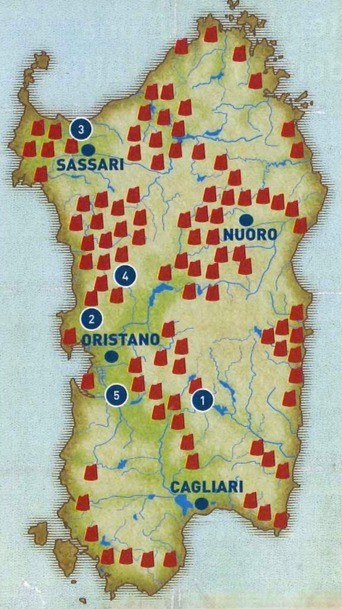
But back to the nuraghes, monumental structures whose toponym would seem to derive from the word nur (or nurra), meaning "cavity," "heap," or "cave." Terms that give rise to various considerations and hypotheses about the original function and its changes in use. Another theory states that the word nuraghe comes from the union of the Phoenician terms nur (fire) and hag (house), thus "house of fire," very similar to furraghe, the baking oven for tiles and bricks in use in Sardinia, which also finds assonance with Italian "furnace."
A reference to the metallurgical skill of the Nuragic people, who knew how to exploit the natural resources of the area and whose skill in metalworking was appreciated by other Mediterranean peoples. It appears that the Etruscan-Romans used Sardinian bronze to shape the Capitoline She-wolf. Not surprisingly, some scholars identify the nuraghe as an ancient "smelting workshop," where tin and copper alloys were created to make cutting-edge weapons and tools.
Rebellious heart
The presence of stylized vessels highlights relevant maritime skills. It should not be forgotten that the Nuragics were also derived from the "people of the sea" of the Shardana, mentioned in the Bible and described as a "great people" by Pharaoh Ramses II, who enlisted them in his Royal Guard during the Battle of Kadesh (1274 B.C.). The Shardana wore distinctive horned helmets and a short skirt, and they constituted a warlike and proud people, "rebellious-hearted, masterless," who developed in the late Bronze Age.
Other signs of the Nuragic civilization come from island place names: the variants of the names of many localities (Nurri, Nuragus, Nurachi, etc.) and regions, such as the Nutra between Alghero and Asinara; or some natural elements, such as the nuragus vine. Many theories have followed over time to explain these complexes of "massive stones." This is how the famous archaeologist Heinrich Schliemann, the discoverer of Troy, defined them, who came to Sardinia to inspect them and identified them with the daidaleia, a Mycenaean-inspired work, linking the Sardinian civilization to the Aegean one. According to this theory the Sardinians would be heirs of the Achaeans, brothers of the heroes of Troy, who came to the island 3500 years ago. A link that other scholars would also like to confirm by the presence of more than thirty Nuragic-Mycenaean toponyms (including the name of Karalis-Cagliari and some typical surnames, such as Ghironi and Pirroni), the typical tholos (the "false domes"), the ogival-section corridors of some nuraghes, as well as the walls of Sant'Antine, which seem to have much in common with Mycenaean ones. The carnival mamuthones themselves would be derogatory caricatures of the hated Phoenicians.
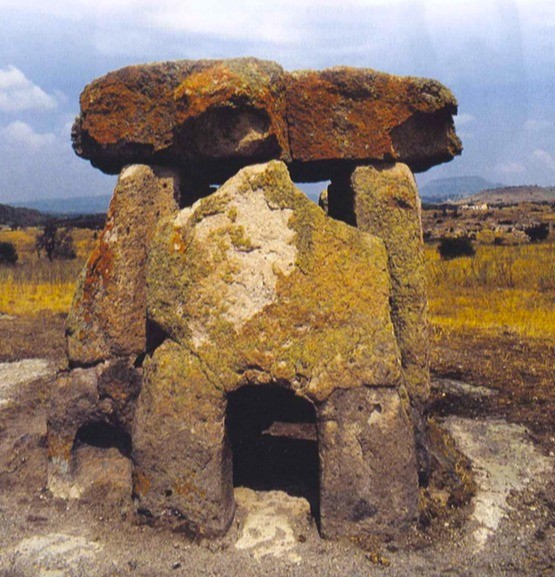
Theories about the function of nuraghes have held sway since the eighteenth century. The towers were seen as refuges against pirates, dwellings of nomadic shepherds or landowners, storehouses of food and goods, temples of the sun cult, lookouts to guard the coasts and transmit alarm by means of fires (from each nuraghe two others could be seen). Another hypothesis refers to the burial function performed by the nuraghes, confirmed by the proximity of tombs of ancient chieftains and sacred idols. In this sense should be conceived the typical Tombs of Giants, the name of which perhaps derives from the Greek gheno, "born of the earth," i.e., indigenous, and are presented as monumental burials consisting of corridors surrounded by wide exedras that suggest collective burials. Some people have even hypothesized a "therapeutic" function of the towers, designed to cure particular diseases of a psychic nature (hallucinations, obsessions, epilepsy, etc.), which could be alleviated by sleeping in the presence of the mummy of a Nuragic hero. The new theory, elaborated by Dolores Turchi and taken up in Michela Murgia's narrative guide, Viaggio in Sardegna, draws on passages from Aristotle and Tertullian referring to a shamanic practice of the Nuragics: the hero "freed from visions those who went to sleep in his temple."
As can be seen, the mystery of the nuraghes has not yet been solved. We can, however, analyze their characteristics, let us focus on the palace of Barumini (Su Nuraxi), now part of the Unesco heritage: a complex village, discovered and enhanced by archaeologist Giovanni Lilliu, a symbolic figure in research on ancient Sardinian civilization.
Ziqqurat of Sardinia
As many as 120,000 blocks weighing more than half a ton, transported from quarries 3 kilometers apart, have been surveyed in Barumini, confirming astonishing technical capabilities. Equally revealing are the S'Uraki at San Vero Milis, consisting of some 15 towers, the Tiscali nuragic village at Dorgali (40 stone huts set in a karst sinkhole, possibly post-nuragic) and the fascinating Losa nuraghe at Abbasanta in the Oristanese region. Here a truncated cone tower stands out, around which three others are arranged, joined by walled cottinas. Variations in construction testify to the building skills of a civilization of great builders, who as early as the mid-2nd millennium B.C. were creating structures such as the sanctuary at Monte d'Accodsi, in Sassarese, which is truncated pyramidal in shape and culminates in a wide esplanade reminiscent of Mesopotamian ziggurats. A site linked to pagan cults is the fortress of Cuccurada in Mogoro, which appears to date to the Copper Age, with its whitish staircases joining the various floors.









